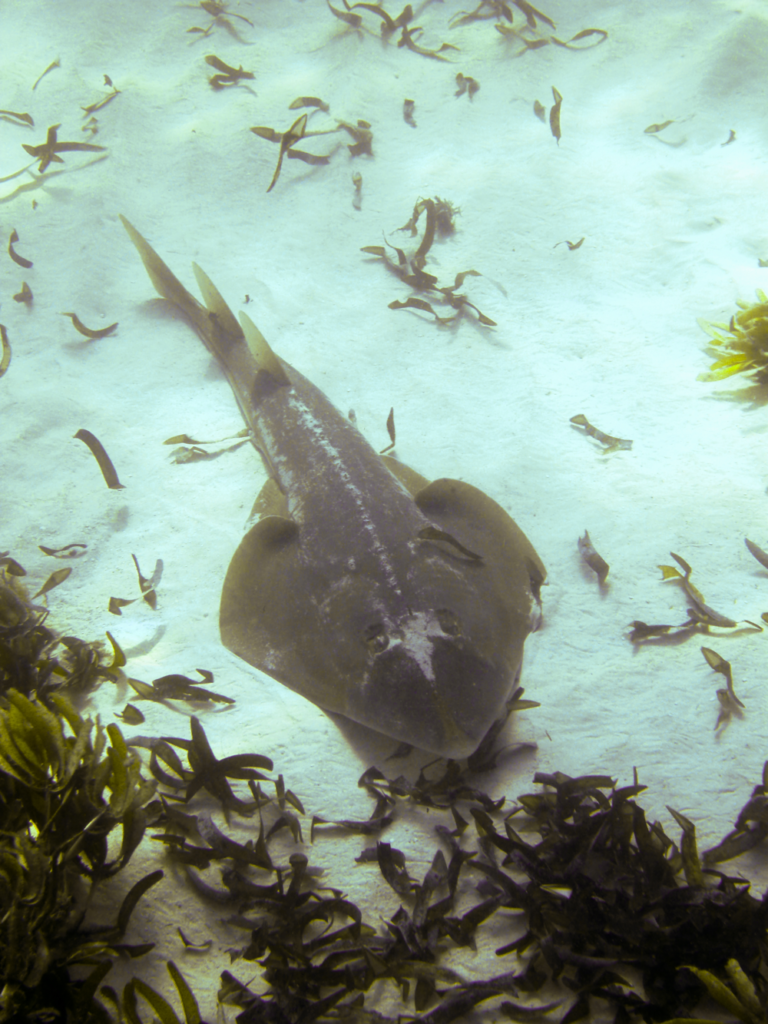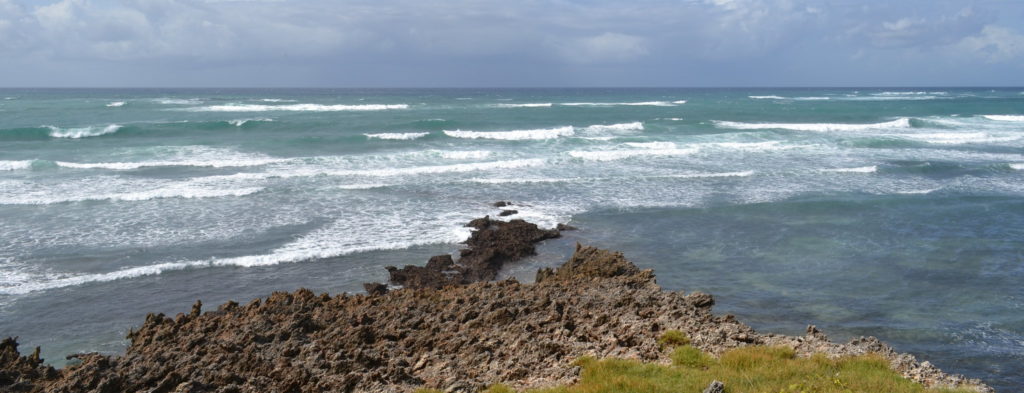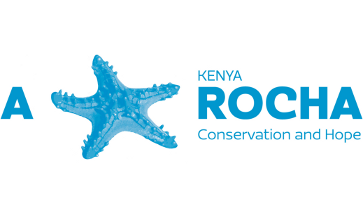Spotted in Watamu Marine Park: Halavi Guitarfish
On Saturday morning, as we prepare to head out snorkelling, Eric, who heads up our Marine Research, tells me he’s heading down to the water already to look for Guitarfish.
A few minutes later, he comes back up to give us snorkels and masks… sadly no guitarfish in sight…
But his disappointment didn’t last long, because a Halavi Guitarfish was waiting for us just a few meters out from Mwamba beach! It stayed calm a few minutes for us to observe it fully, before swimming away. What a great start to our snorkel expedition!

Halavi Guitarfish
Guitarfish are closely related to rays, which owe their name to their shape (triangular head, wide body and shark-like tail). Like all rays, they are ovoviviparous:the embryo matures inside an egg inside the mother until it is ready to hatch.
Why was it so exciting?
This was a particularly encouraging sighting as this species of guitarfish is classified by the IUCN as critically endangered, meaning that they face an extremely high risk of extinction in the wild. Guitarfish face a number of combined threats and are slow to reproduce, causing their populations to decline at an alarming rate. This is concerning to say the least, and is compounded by the fact no conservation sites have been identified as of yet. It is urgent to better understand this species’ breeding grounds and ecology to better protect it.
It is urgent to better understand this species’ breeding grounds and ecology to better protect it.
Many juveniles have been spotted in shallow waters in the past, suggesting that Watamu Marine Park could be a potential nursery site for this species. However, their presence in shallow water means they overlap with beach users, and are likely to be disturbed by kite surfers, people snorkelling and boat trips. They are also caught in by-catch of fisheries close to the Marine Park. To ensure their future survival, effective enforcement of rules urgently need to be implemented and followed.

Watamu Marine Park, Photo by Jaap Gijsbersten
What are we doing about it?
Our Marine Team is working closely with Kenya Wildlife Service to carry out surveys on Elasmobranchs, a marine subclass comprising of sharks, rays, skates and sawfishes. At the top of the food chain, this family plays a critical role in structuring and maintaining healthy marine ecosystems by controlling population sizes and altering the spatial habitats of their prey. This indirectly helps in the development of coral habitats and seagrass, making them a key indicator of a healthy ocean. The Watamu Marine Park is a critical breeding ground for a number of vulnerable and near threatened rays and sharks.
Using BRUV (Baited Remote Underwater Video) surveys, swim surveys and SCUBA surveys, our team collects regular data to monitor the abundance and ecology of elasmobranchs.
This data is much needed for conservation and good management of these species. It contributes to keeping the IUCN and CITES species status up to date and helps advance the Sustainable Development Goal 14.2: “By 2020, sustainably manage and protect marine and coastal ecosystems to avoid significant adverse impacts, including by strengthening their resilience, and take action for their restoration in order to achieve healthy and productive oceans”.
Sustainable Development Goal 14

